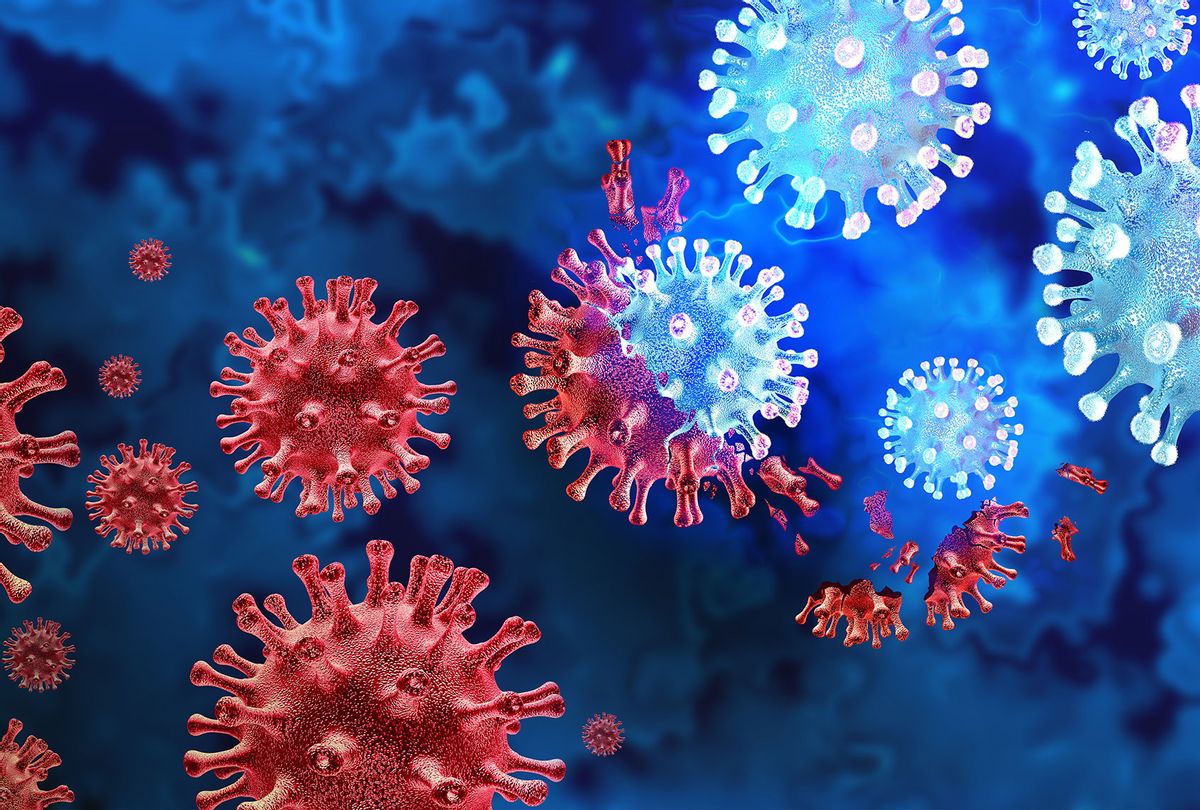A new COVID variant nicknamed “Pirola” is raising global alarm but don’t freak out yet

Since the original virus that causes COVID, SARS-CoV-2, emerged in March 2020, it has mutated into dozens of variants, but most don’t differ too much from the “parents” they evolved from. However, a new variant scientists are bringing to our attention is about as genetically different from Omicron as Omicron was from the original “wild type” strain first detected in Wuhan, China in late 2019.
On Thursday, the Centers for Disease Control and Prevention (CDC) announced it was tracking a new lineage of the virus, BA.2.86, following the World Health Organization (WHO) adding the strain to its list of “variants under monitoring.” Originating in Israel, the variant has since appeared in Michigan in the U.S., three times in Denmark and once in the U.K., which has issued its own risk assessment.
Just six overall cases were reported worldwide as of Friday, but the fact that the variant, nicknamed “Pirola,” has already spread across multiple continents is “concerning,” said Dr. T. Ryan Gregory, an evolutionary and genome biologist at the University of Guelph in Canada.
“It’s not clear how big the impact could be if it were to take off,” Gregory told Salon in an email. “We do have some degree of population immunity against severe disease from vaccines and past infections, but the concern for quite some time is the potential for another ‘Omicron-like event,’ in which a very different new variant evolves and causes another major global wave.”
Want more health and science stories in your inbox? Subscribe to Salon’s weekly newsletter The Vulgar Scientist.
While this new variant wasn’t given a new Greek-letter distinction like Alpha, Delta or Omicron, it is very different from the most current Greek-letter family of variant descendants: Omicron. While it shares about 30 of the same spike mutations, which allow the virus to attach itself more easily to receptors in cells, it also has 30 unique ones.
Specifically, there are about 57 mutations of the spike protein, which potentially increase its ability to cause infection, said Dr. Rajendram Rajnarayanan, of the New York Institute of Technology campus in Jonesboro, Arkansas. Most variants have around 20 to 30 mutations, he added.
“This is definitely going to spread,” Rajnarayanan told Salon in a phone interview. “This had all the necessary ingredients of being a successful lineage.”
“This is definitely going to spread. This had all the necessary ingredients of being a successful lineage.”
Scientists emphasized that this new variant isn’t yet a cause for alarm. Still, COVID infections are increasing internationally, and cases in the U.S. have returned to what is considered “high,” with 610,000 new infections per day. That’s more than triple the level recorded a month ago, which was around 185,000 cases per day, according to wastewater data used to estimate the spread of disease. However, this uptick in cases is not due to the new variant yet. Other closely-related variants like EG.5 and XBB.1.16 make up an estimated one-third of cases, with the rest caused by a couple dozen other variants, according to CDC data released Friday.
That being said, there are likely additional cases of this new variant, Pirola, that haven’t yet been detected because the cases identified were only the ones severe enough to be detected in hospitals.
“This is nothing to be alarmed about, but this is a wake-up call to do new sequencing,” Rajnarayanan said. “It’s not every day you have variants like this pop up.”
“It is a reminder that variants continue to evolve and that the more infections there are, the more evolution there will be.”
Overall, testing and the sequencing that detects new strains have decreased since the WHO and the U.S. removed their pandemic emergency declarations. It’s too soon to see if this new variant will manifest differently in terms of symptoms or severity of disease, given so few cases have been identified. However, the current boosters will likely still work, at least against severe disease.
Pirola is derived from a SARS-CoV-2 lineage circulating over a year ago that hasn’t been in the news much since. But in the meantime, the emergence of BA.2.86 shows it has indeed been evolving on its own, said Marc C. Johnson, Ph.D., a professor of molecular microbiology and immunology at the University of Missouri School of Medicine. The virus likely mutated multiple times in a single chronically ill patient, Rajnarayanan added.
“It’s picked up a lot of immune evasive mutations that our immune systems haven’t seen yet,” Johnson told Salon in a phone interview.
Scientists emphasized that although there is still much unknown about the new variant, what is known is that the same pandemic protocols used to prevent the spread of disease work the same across all variants and are the best way to ensure this new variant doesn’t become the next Omicron. Masking, testing and keeping up on vaccines are all critical.
“Hopefully this won’t be an ‘Omicron-like event,’ but it is a reminder that variants continue to evolve and that the more infections there are, the more evolution there will be,” Gregory said. “As always, the key here is mitigating transmission using variant-proof measures like respirators, ventilation, air filtration and avoiding exposure where possible.”
Read more
about COVID-19

